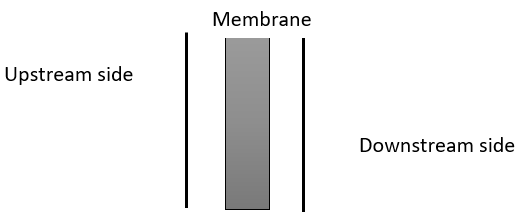This set of Bioseparation Engineering Multiple Choice Questions & Answers (MCQs) focuses on “Dialysis”.
1. Dialysis is a __________ driven process of separation in the bioseparation engineering.
a) diffusion
b) filtration
c) sedimentation
d) crystallization
View Answer
Explanation: Diffusion is the process of movement of a solute from a region of higher concentration to the region of lower concentration. It takes place in liquids and gases since the solute particles move arbitrarily in the system.
2. Dialysis is used for the separation of macromolecules from __________
a) macromolecules
b) solutes
c) micromolecules
d) solvent
View Answer
Explanation: As the process of diffusion separates the macromolecules from the micromolecules, the same process takes place in the method of dialysis, it separates the larger molecules from smaller molecules in a system.
3. The separation of the solute takes places due to ________
a) large solute partition
b) small solute partition
c) solute partition
d) solvent partition
View Answer
Explanation: The process of separation of solutes takes place due to the partitioning of the small solutes in the membrane better than larger solutes. It occurs due to the amount at which the membrane limits the access of solutes into it and it surges with the size of solute. The solutes having smaller size also diffuses more quickly than the larger solutes.
4. What is the net result of the process of dialysis?
a) Restriction of macromolecules
b) Entry of macromolecules
c) Membrane restriction
d) Membrane rupture
View Answer
Explanation: As a net result of the process, the dialysis membrane stopovers the macromolecules and restrict it from moving through at the same time allows the smaller molecules to diffuse through the membrane.
5. The application for the process of dialysis is ________
a) removal of acid
b) removal of solute
c) addition of salts
d) removal of acid and alkali
View Answer
Explanation: The application of the process of dialysis includes the separation or the concentration of macromolecules, removal of the alkalis as well as the acids from the desired product, removal of salts from the macromolecules, purification of blood.
6. What is the significance of the given diagram?

a) Filtration
b) Dialysis
c) Sedimentation
d) Evaporation
View Answer
Explanation: The given diagram shows the concentration profile in the process of dialysis. The particles at the upstream side passes through the membrane and moves to downstream side across the boundary layer.
7. The __________ of solute across the membrane drives the transport through the membrane.
a) concentration difference
b) pressure drop
c) density
d) molecular weight
View Answer
Explanation: The concentration difference is the process by which materials are elated from one side of a system to other as a consequence of casual molecular motions and hence it allows the movement of solute across the membrane.
8. The solute flux is __________ proportional to the difference in the solute concentration.
a) inversely
b) un-Proportional
c) directly
d) no change
View Answer
Explanation: The flux of the solute sued in the process of dialysis is directly proportional to the concentration of solute difference across the membrane and is inversely proportional to the membrane thickness.
9. What is the equation for the solute flux in the dialysis process of separation?
a) J = Deff\(\frac{\Delta C}{\delta_m}\)
b) J = SDeff\(\frac{\Delta C}{\delta_m}\)
c) J = S\(\frac{\Delta C}{\delta_m}\)
d) J = \(\frac{\Delta C}{\delta_m}\)
View Answer
Explanation: The equation for the solute flux in dialysis is J = SDeff\(\frac{\Delta C}{\delta_m}\) where S is the dimensionless solute partition coefficient, Deff is the effective diffusivity of solute within the membrane, δm is the membrane thickness. It can be rewritten as J = KmΔC\(\frac{\Delta C}{R_m}\) where Km is the membrane mass transfer coefficient and Rm is the membrane resistance.
10. The liquid boundary layer on the sides of the membrane contributes to the _________ solute transport.
a) resistance
b) support
c) diffusion
d) membrane
View Answer
Explanation: The liquid boundary layers on side of the membrane contribute to the resistance caused to the solute transport through the dialysis membrane by generating supplementary diffusion barriers. The three resistances are feed side boundary layer, membrane and dialysate side boundary layer.
Sanfoundry Global Education & Learning Series – Bioseparation Engineering.
To practice all areas of Bioseparation Engineering, here is complete set of 1000+ Multiple Choice Questions and Answers.
If you find a mistake in question / option / answer, kindly take a screenshot and email to [email protected]
